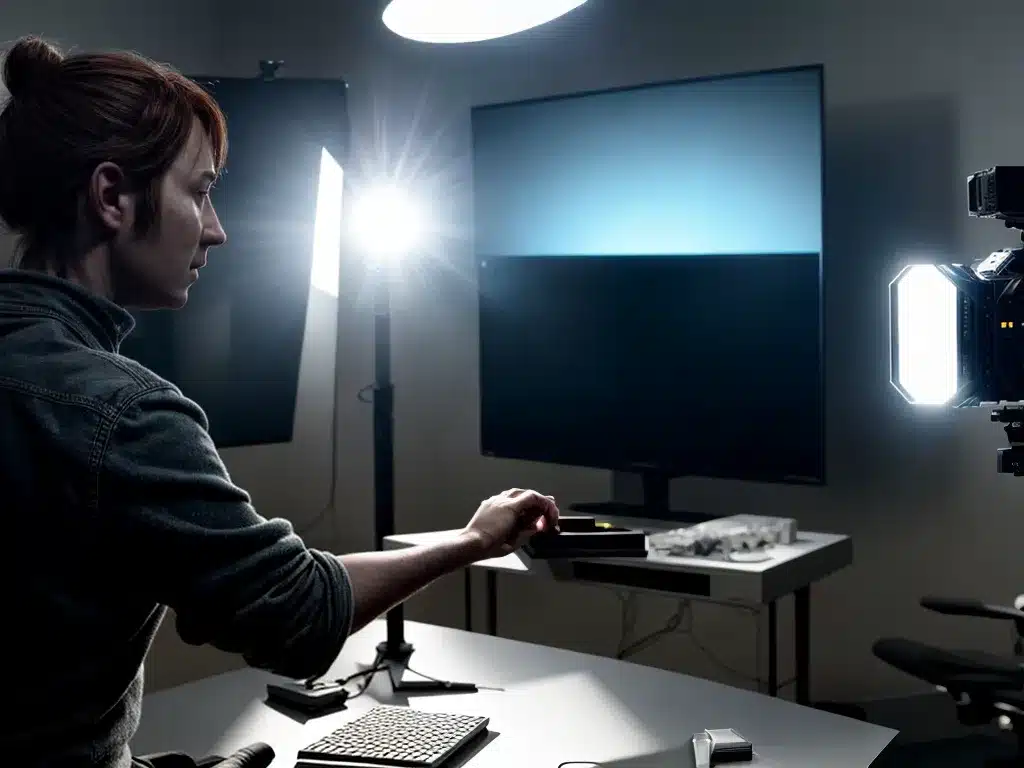
Introduction
Ray tracing is an advanced rendering technique that is revolutionizing visual effects in TV and film production. It produces incredibly realistic lighting, reflections, and shadows by simulating the physical behavior of light. I will discuss what ray tracing is, why it is superior to traditional rendering techniques, how it is being adopted across the industry, and the impact it is having on visual effects for entertainment.
What is Ray Tracing?
Ray tracing is a rendering technique that traces the path of light as pixels in an image are rendered. It simulates the physical behavior and properties of light to create stunningly photo-realistic effects.
Here’s a quick overview of how it works:
- Rays are shot from the camera into the 3D scene
- When a ray hits an object, additional rays may spawn
- Shadow rays
- Reflection rays
- Refraction rays
- The rays will interact with objects, bounce around, and gather lighting information
- The lighting data is used to determine the final color of pixels
Unlike rasterization used in traditional rendering, ray tracing better simulates real-world optical effects like reflections, refractions, shadows, global illumination and ambient occlusion. This allows ray tracing to render effects like mirrors, glass, smoke, and shadows with a true-to-life accuracy not possible before.
Why is Ray Tracing Superior for VFX?
There are several key advantages that make ray tracing revolutionary for TV and film visual effects:
-
Realistic lighting and shadows – Ray traced shadows have soft, natural edges and accurately simulate light bouncing around a scene. This added realism is huge for convincing visuals.
-
Accurate reflections and refractions – Ray tracing calculates perfect camera-angle reflections and refractions through glass, water, and other transparent objects. This enables new storytelling possibilities.
-
Unified lighting – With ray tracing, all lighting effects come from the physical properties of light. This creates consistent, realistic visuals not possible with rasterization.
-
Streamlined workflows – Ray tracing reduces the need for “tricks” like pre-baked lighting and sacrifices for real-time interactivity. It makes the entire VFX pipeline more efficient.
-
Future-proofing – Ray tracing is predictive of how light behaves. As compute power grows, it will automatically produce higher fidelity visuals and more advanced effects.
In summary, the simulated “reality” of ray tracing allows VFX artists to achieve new heights of photorealism in their scenes and effects. The advantages over rasterization are clear for high-end film and episodic television production.
Adoption of Ray Tracing in the Industry
While ray tracing has been used sporadically in films for decades, it is now seeing massive adoption thanks to advances in GPU technology. Some milestones:
-
Early examples of film ray tracing include Terminator 2 (1991) and Toy Story (1995).
-
Nvidia RTX GPUs (2018) brought real-time ray tracing capabilities to professionals and consumers. This led to a boom in adoption.
-
The first TV episodes with ray traced effects appeared in 2019 (The Mandalorian, Watchmen).
-
Recent and upcoming ray traced films include Jungle Cruise, Turning Red, Doctor Strange 2.
-
Unreal Engine 5 (2022) provides ray tracing tools for real-time visual effects.
-
AMD FidelityFX Super Resolution can boost ray tracing performance on their GPUs.
Clearly ray tracing is gaining steam as the new standard for high-end VFX. It offers flexibility between rendered and real-time applications using the same core algorithms. The render farm and game engine worlds are colliding as ray tracing unifies the VFX pipeline.
Impact on Television and Movies
Ray tracing empowers visual effects artists to bring their creative visions to life with new levels of realism. Specifically, it is impacting VFX for TV and film in the following ways:
-
More immersive environments – Ray traced global illumination, shadows, and reflections increase the sense of presence in virtual worlds. CG backgrounds blend perfectly with live-action.
-
Higher quality studios and tighter budgets – Ray tracing enables impressive effects on TV timelines and budgets. It also helps future-proof content as compute power grows.
-
Advances depended on path tracing – Many new effects like accurate human skin, eyes, hair, and photoreal digital humans rely on path tracing to achieve needed realism.
-
Creativity, not technology limits – With ray tracing rendering their vision, artists are no longer limited by technology. They are only limited by imagination and budget.
-
New storytelling methods – Hyper-realistic CG characters, scenes, and objects open doors for filmmakers. Expect CG to play bigger roles as virtual production advances.
In summary, ray tracing tears down the compromises of rasterized rendering. It enables VFX artists to maximize realism and quality for whatever the scene demands. As ray tracing becomes ubiquitous, it will empower creators across television and film to tell stories in new and breathtaking ways.
The Future with Ray Tracing
Ray tracing sits at the core of an exciting new era of photorealistic visual effects in television and film. Some predictions:
-
Acceleration in GPU hardware – Nvidia, AMD, and Intel will continue competing and innovating to accelerate ray tracing. Moore’s Law is not dead yet.
-
Democratization for all creators – Game engines like Unreal will provide omnipresent access to ray tracing for real-time films and episodic VFX.
-
Evolution of workflows – Traditional offline rendering will give way to interactive, iterative techniques based on trusting the “ground truth” of path traced results.
-
More VFX innovation – Ray tracing removes technical limitations and shifts focus to maximizing artistry and reducing budgets. What new effects will emerge?
One thing is certain – ray tracing will continue rapidly transforming visual effects for TV, streaming, and major motion pictures. The future is bright and more photoreal than ever before thanks to the power of lighting simulations. Ray tracing sits at the core of an exciting new era.












